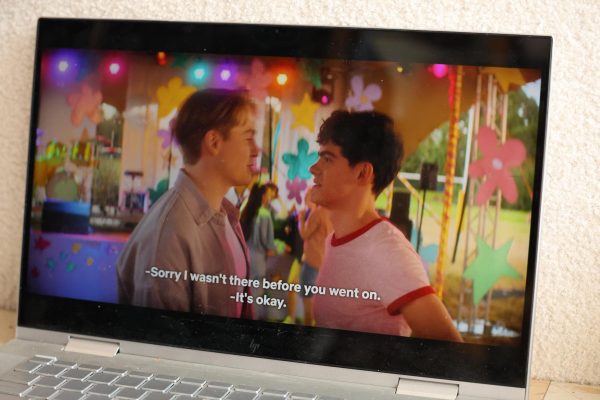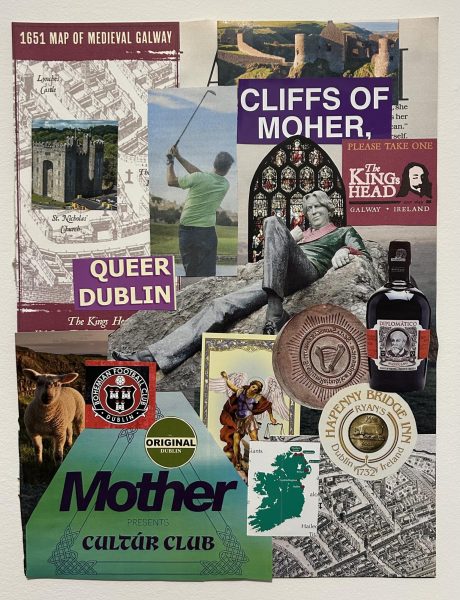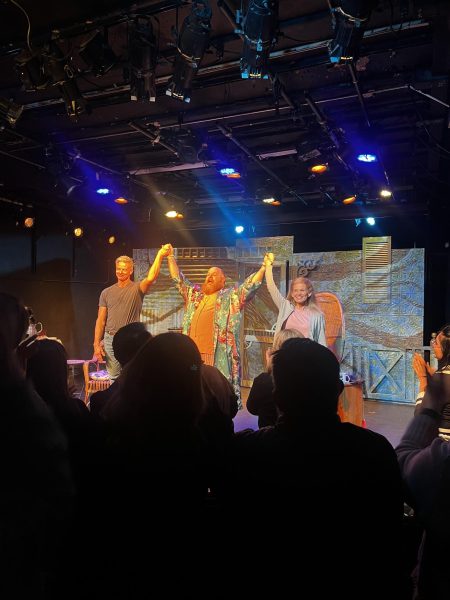“Silent Hill 2” is a Dark Window into the Human Condition
Japanese video game developers “Team Silent” released “Silent Hill 2” in 2001. (Courtesy of Instagram)
When we find ourselves at a low point in our lives, the most human response is to combat our anxieties with something that makes us happy. Everybody has some happy place, whether it’s comforting media, an actual location or people that can make us forget our worries. What does our happy place become when its familiarities — in all its comfort and solace — rot, rust, mold and melt into a loathsome sight? The specter of depression roams the streets. The lights have turned off. The usual smells are subsumed in pure, acidic sulfur.
But where do we go from there — when the voids at the recesses of our unconscious become carnivorous, consuming even our most optimistic desires? What do we do when we lose the drive to pursue happiness — when it’s no longer enough to want to be happy, but that any semblance of emotional release relies on penance? At some point, the need to punish ourselves takes hold of our psychic apparatus. The guilt of our past weighs heavy on the conscience, and pleasure comes from rewarding ourselves with pain.
In 2001, Japanese video game developers, Team Silent, released “Silent Hill 2,” a video game that has, since release, garnered near-universal acclaim for its complex portrayals of grief and depression, its heavy use of symbolism, its layered metaphors and masterfully crafted atmospheric tone. Its beautiful soundtrack, composed by Akira Yamaoka, is just as much classical piano as it is alt-rock, industrial and ambient.
Famously, many of its artistic influences come not from ancestral video games, but from classic Russian literature (namely Dostoevsky’s “Crime and Punishment”), expressionist painters like Francis Bacon and surrealist filmmakers like David Lynch. The roots of the game’s character psychology can also be found within the recesses of the works of Freud or Lacan. Needless to say, the development of “Silent Hill 2’s” narrative is an encompassing, dense enrichment that outperforms even the large majority of modern-day video games. Though the video game industry post — “Silent Hill 2” saw an uptick in similarly dense narratives, or at least many attempts to recreate what made SH2 special, the 2001 classic remains iconic.
The game is almost guaranteed to be mentioned in any discourse around “the greatest video games of all time” or whether or not the medium should be considered in art criticism. There isn’t much to say about “Silent Hill 2” that hasn’t already been said.
At its core, the game is based on a very simple premise. Protagonist James Sutherland receives a letter from his thought-to-be-deceased wife, Mary, who asks James to find her in the town of Silent Hill, a place where the couple once happily vacationed — their happy place. When he arrives, James finds the town to be shrouded in thick fog and nearly abandoned, save for a few other humans who are suffering from their own delusions and disgusting fleshy creatures that roam the streets. James takes it upon himself to find Mary somewhere in the town and must face an enduring cycle of trials and tribulations.
As players march forward, it’s revealed, first, that Mary died while hospitalized for an unspecific life-threatening illness and, second, that it wasn’t the illness itself that took Mary’s life, but James, who smothered her with a pillow, believing this to be a better alternative to letting Mary suffer through a fatal illness. It is at this moment that much of the game’s horror is synthesized, forcing the player to respond to the fact that the protagonist they’ve been playing as and identifying with is actually his own wife’s killer. Suddenly, his behavior (and the town’s reaction against it) becomes clear. What we’ve been experiencing alongside James is a torturous, physical manifestation of the protagonist’s guilt and fervor for punishment.
Nearly every aspect of the video game has been picked apart, analyzed and made to fit in with the overarching themes of James’ guilt around ending Mary’s life prematurely. There are small symbols, like the overly sexualized design of hospital nurse inspired monsters that reflect James’ shame for his conscious libidinal desires of the nurses in Mary’s hospital, or the constant stalking of the “Red Pyramid Thing,” a ghastly apparition of an ancient executioner that symbolizes James unconscious desire to be killed for his sins.
The game’s soundtrack is exclusively instrumental except for a single song that contains lyrics, which must be played in reverse to decode. In the song “The Reverse Will,” lyrics capture James’ own willingness to end his life through a recitation of an old prayer, “Now I Lay Me Down to Sleep.”
The most significant of the symbols arises in the form of one of the video game’s main characters, Maria, an inhabitant of Silent Hill and a doppelganger of James’s dead wife dressed in more revealing clothing (again a reference to the protagonist’s repressed sexual urges during his wife’s illness). Throughout the course of the game, Maria is killed and resurrected. Each time, she becomes increasingly aggressive in blaming James for her deaths.
What makes “Silent Hill 2” a mesmerizing experience extends beyond its complex narrative structure. Just as essential is its long-lasting and universal explorations of the deepest, most punishing grief that defines the human experience. Beyond metaphors and symbols, the game’s endings are the strongest statement pieces.
“Silent Hill 2” rewards player behavior with multiple possible endings, each programmed to activate depending on how players control James over the course of the story, supposedly reflecting James’ psychology throughout the story. No matter what ending the player receives, the game approaches the narrative with cynicism.
The happiest possible ending is also the most unsatisfying: James comes to terms with his actions and tries to move on. He finds a hauntingly beautiful letter from Mary, intended to reach him after her death. In the letter, she ultimately forgives him and asks him to move on. He gets back in his car, alone, and drives away from Silent Hill. Seemingly, the best we can do is continue to live with our guilt. Alternatively, the narrative also suggests that simply ignoring our problems will only doom us to face the same problems, even if in a different shape. This common moral is represented through James leaving Silent Hill, only this time taking Maria with him. Before the two leave, Maria coughs, suggesting that she’s fallen ill with the same sickness as her doppelganger. Or, depending on how players play the game, the game closes with James driving his car into a lake and drowning himself. He can no longer bear the weight of his sins. If we can’t learn to come to terms with our past and refuse to acknowledge it, it may drive us to insanity and, in extreme circumstances, suicide.
“Silent Hill 2” is a horror game that relies less on jumpscares than it does on pure atmosphere. It invites the player to directly participate in the horror. The longer you play it, the more unsettling it becomes. It forces the player to become active in its horror. Players are only scared by the monsters lurking in the abandoned buildings they choose to enter, only interact with the environment through buttons they press and only learn about James’s crimes after assuming his body for hours.
The video game forces us to assume some of the worst emotional cycles that humanity has to offer, giving us windows into the human condition that we hopefully never have to confront.
The longer the television set stays on, the more the player creates their own horror.

Sebastian Diaz is a senior from Chapel Hill, N. C. who is double majoring in journalism and film. After starting as a news reporter for The Fordham Ram...














































































































































































































artificialperiod • Jul 26, 2024 at 9:47 am
amazing article !
Carl • Nov 14, 2022 at 9:02 pm
Great analysis, man 👏 as a long time fan of the game, that was nice to read.
Mahmoud Al elewi • Nov 13, 2022 at 4:08 pm
This game still hunts me…
I started to feel comfortable in that fog..
I can hear the themes play in my head..
Horrifying and pleasing my very core..